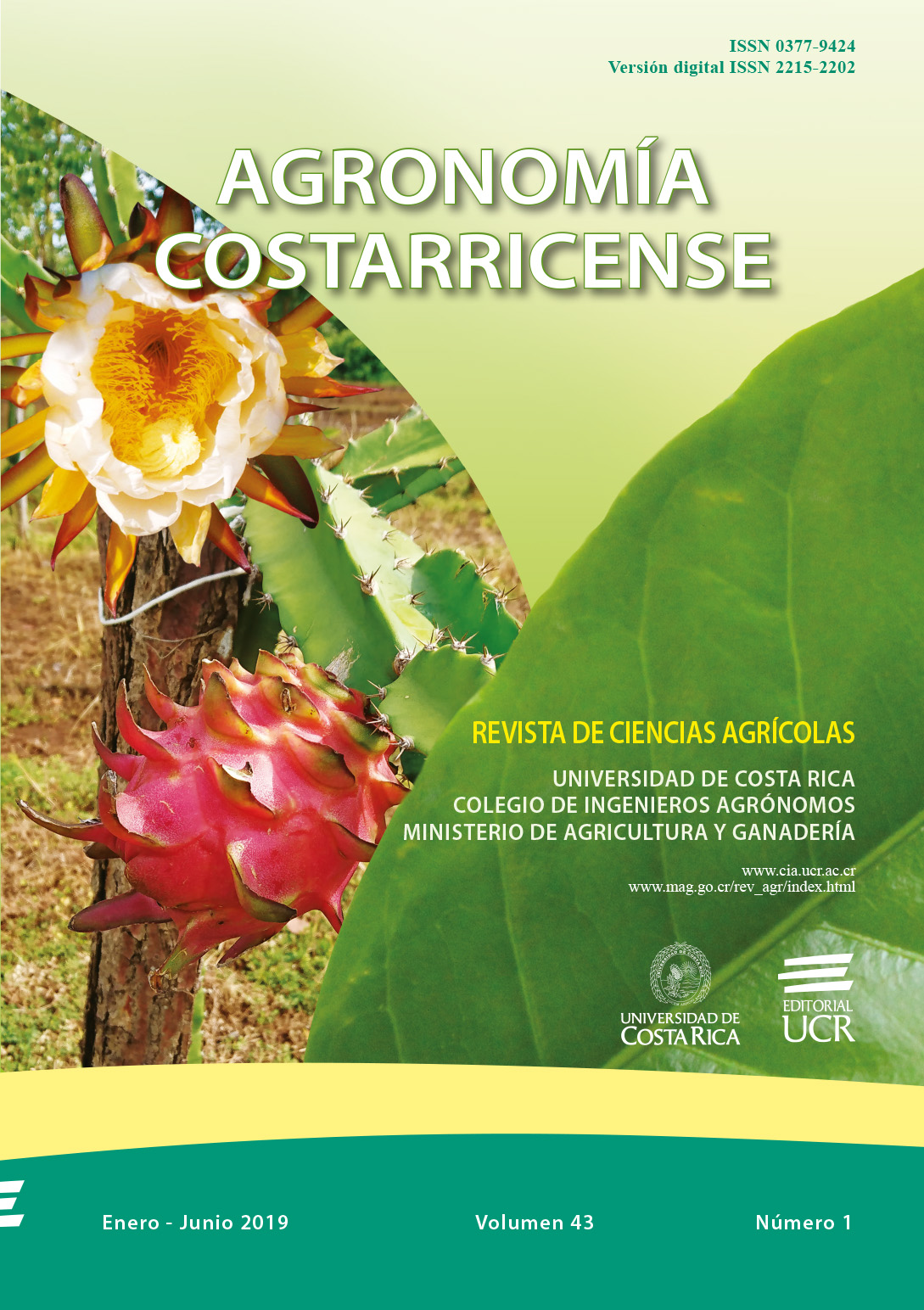Abstract
A survey of the diseases affecting pitahaya (Hylocereus costaricensis) in Costa Rica was carried out during 2011 and 2012. One of the most important, due to its high incidence (100%), was the stem canker. The symptoms observed were irregular orange and red small spots and beige-gray coloration with raised center. In order to determine the causative agent, 85 samples were collected, complete cladodes with different stages of disease development, from which 40 isolates were made. From these isolates, an organism grew in a consistent manner, with which the identification, morphological and molecular characterization, as well as verification based on Koch’s postulates was carried out. Based on the form of growth, mycelial coloration and the morphology of the arthroconidia, and the molecular characteristics (sequencing of the ITS region), the pathogen associated with the symptoms presented a 99% similarity with Neoscytalidium dimidiatum (Penz.) (No. of accession KJ513460, of the isolated fungus in Costa Rica). According to Koch’s postulates, 92% of infection was obtained and a similar symptomatology to the one observed on plants from the field, in addition, the same organism that was inoculated was recovered. This is the first report of this fungus causing damage to the stem of Hylocereus costaricensis in Costa Rica.
##plugins.facebook.comentarios##

This work is licensed under a Creative Commons Attribution-NonCommercial-NoDerivatives 4.0 International License.
Copyright (c) 2018 Agronomía Costarricense


